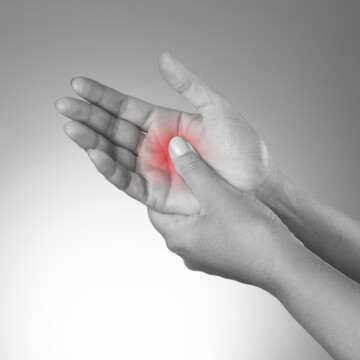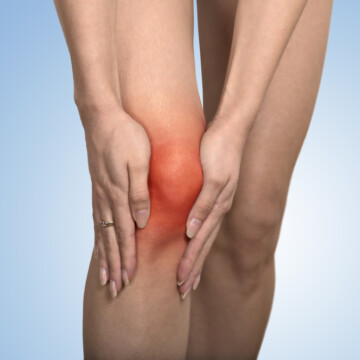
We all know that sports like cricket fast bowling, and golf contribute to back pain. Fast bowlers in cricket or swinging a golf club have the potential to overstretch or damage the back muscles. But does the same apply to ten pin bowling?
In this article, we’ll tell you with certainty whether bowling can cause back pain. We’ll also share tips on how to prevent and treat bowling-related back issues.
Bowling is an overlooked contributor to back pain, but it occurs quite often in both new and experienced bowlers. Back pain from bowling can easily put a player on the sidelines for weeks or even months.
Contents
Can Bowling Cause Back Pain?
Bowling is far more physically strenuous than people believe it to be. Bowling action engages several types of movement, which can translate to severe or lasting damage.
Here are eight ways bowling can cause back pain.
- Lacking Important Fitness Conditioning: Bowling might seem like an excellent activity for people of all fitness levels, but that’s not exactly true. Players who are out of shape and lack the strength and flexibility required to bowl can risk serious back and arm injuries. This includes muscle spasms, pain, and even herniated discs.
- Increased Chance of Falling: If you accidentally cross the foul line in bowling shoes, you risk adding the lane’s oil to an already slick situation (the shoe bottoms). Falls can lead to bruising, strained muscles, and even broken bones.
- Poor Form and Technique: Bowling involves repetitive motion with clunky, heavy equipment. The top part of your body is often required to move in the opposite way that your bottom half must go. Bending, straining, and swinging that heavy ball can lead to falls, strains, and even worse injuries.
- Not Enough Rest for Your Muscles and Joints: Athletes can and do overuse their muscles and joints, which often results in injuries. The same is true for bowlers, especially if they bowl frequently. Your back is just one of the places you stand to strain or injure if you don’t take breaks often enough. One of the worst injuries a bowler can get from placing extreme demands on their back is spinal arthritis. This progressive condition can significantly limit or end a bowler's career or ability to play the sport.
- No Warm-Ups: Anyone involved in sports knows that warming up the muscles and joints plays an essential role in their performance. This is especially true of bowlers. Someone who doesn’t warm up risks overall muscle fatigue, overuse injuries, and back discomfort.
- The Ball is Too Heavy: If your ball is too heavy, the unnecessary weight will take its toll on your body. Pulls, tears, and more significant problems with your back can occur quickly when your ball weighs too much for your body frame.
- Lifting the Ball With One Hand: It might not seem like a big deal, but when a bowler repeatedly lifts their heavy ball off the rack with one hand, it puts strain on their shoulders and back.
- Pre-Existing Back Problems: A common mistake made by people with pre-existing back problems, is to assume that bowling is an injury-free activity. You risk reinjuring your back or causing new back issues when you bowl without safeguards. If reinjuring yourself becomes a concern, you should stop bowling and seek professional advice.

How Do You Get Rid of Back Pain After Bowling
If you have back pain after bowling, you don’t want to ignore it. Pain is a sign that something has gone awry. Neglect can persist or worsen whatever’s wrong. You need to take care of the pain before and after bowling.
- Sore muscles can often be relieved by acetaminophen or ibuprofen. If you don’t get any relief from these oral medications or the pain persists when the medication wears off, you need to see a doctor or chiropractor for an assessment. You want to avoid injuries like a stress fracture or surrounding spinal structures.
- Physical therapy is a great way to get your body into the best bowling shape possible. When you strengthen and condition your joints and muscles, you reduce your risk of injury and improve your game.
- Try acupuncture or massage after bowling to see if it helps alleviate your back pain.
- Ice and heat can help alleviate a painful back in different ways, making it essential to carefully choose which works best for your injury. Ice can help reduce pain and inflammation if you have an injury. Heat helps your muscles to relax and improve blood flow to promote healing.

How to Prevent Back Pain From Bowling
The best way to keep from suffering back pain is to prevent it in the first place. Use these tips to help you stay safe and improve your overall game:
Focus On Conditioning Your Body
While bowling is a great way to enjoy low-impact exercise, you still need physical fitness to prevent injury. Mild to moderate exercise and even lifting weights can help. In addition to that, warm up before each game and stretch as you cool down.
Keeping your muscles at peak performance will help improve your game and prevent avoidable injuries.
Ask For Help With Your Form
Solicit assistance with evaluating your bowling technique and form. You don’t have to find a pro to do this. Ask an avid bowler in your area to give you some tips on how to keep your arm straight as you throw without throwing out your back.
Choose and Handle Your Ball Wisely
Make sure you use the right-sized ball and that your shoes have some traction on the soles. Slipping and falling while holding onto a ball that’s too heavy for you can lead to some devastating injuries.
In most cases, the right bowling ball size for you will be a tenth of your body weight.
Though, you may need to go lighter for one reason or another. For instance, you should go for a lighter ball than you normally would if you have an existing back injury and bowling for a long duration.
Once you choose your ball, ensure that you’re handling it correctly. Always pick up your bowling ball using two hands. The strain of lifting with one hand can be painful and damaging to your back.
Know When to Seek Professional Help
See a doctor and/or physical therapist if you have a pre-existing back condition before you begin bowling. Under professional supervision, you can learn how to avoid further degenerative changes to your body as you bowl.

Other Bowling Injuries to Look Out For
Though back pain is a common bowling injury, there are many more that you want to avoid. Some others include:
- Tendonitis of the wrist, elbow, and shoulder
- Ligament sprains
- Tears of the rotator cuff and knee meniscus
- Hip bursitis
- Shoulder tendonitis
- Arthritis
- Lumbar strain or sprain
- Spondylolysis.
Note: This is not a full list of issues you could come across during or after a bowling session.

Related Articles
If you use a body part (tendon, ligament, muscle, etc.) when you bowl, there’s always the potential to injure it. So, pay attention to your body when you bowl, and if you feel pain either during or after bowling, there’s something wrong.
In that case, it’s always a good idea to give your body a rest and check with a doctor before resuming your game. Back pain can take a toll on a person’s energy level and performance in everyday life.
Luckily, you can prevent and treat bowling-related back problems with the information in this article. Remember to always put your body first – if you don’t, you could lose your ability to even play the game.
We hope that you’ve found this article to be helpful. Good luck!
Kira Byrd, a Certified Fraud Examiner, holds a B.S. in Accounting from the University of Alabama at Birmingham. With a passion for bowling from her childhood, Kira has poured her expertise and personal experiences into creating and nurturing Bowling For Beginners. Kira's mission is to meet new bowlers where they are and guide them toward consistently achieving higher scores. With a focus on skill development and strategic techniques, she empowers readers to take control of their game and unlock their true potential.
Bowling For Beginners embodies strict editorial integrity, ensuring reliable and unbiased information. Kira's commitment to delivering valuable insights and practical strategies is reflected in every article. Here's an explanation of our editorial policy and how we get money.




